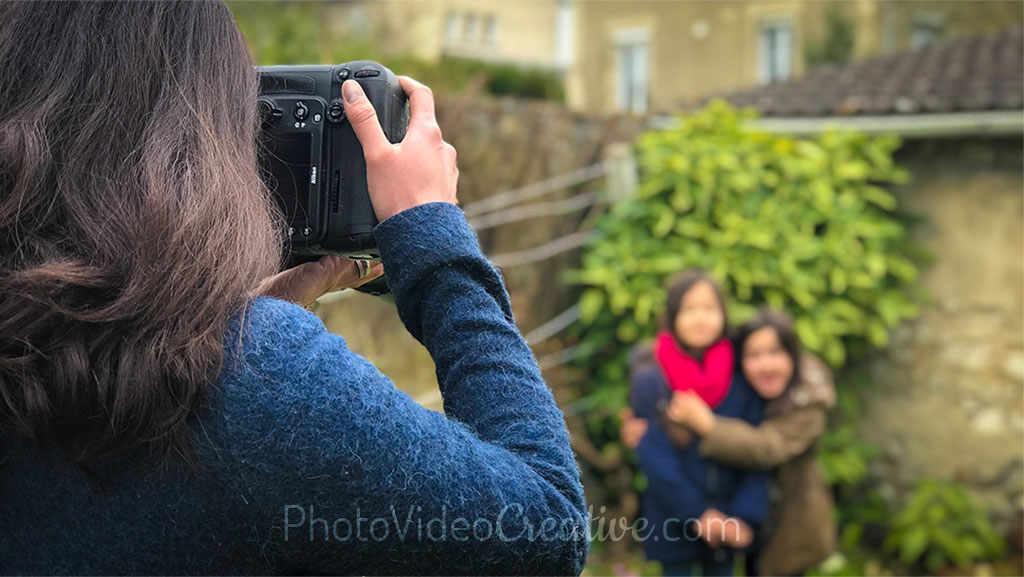
Making great photos always starts with the subject!
Whether it’s a person, an animal, an object, a landscape, an architecture, the subject must touch you to make your photo touch others. So how to successfully capture your subject in your photo?
Here are my 10 tips to emphasize your emotions in front of your photo subject.
1. Keep Your Camera Ready to Shoot
You never know what will be your next picture.
This is even the great interest of photography: you may be only one trigger away from your best picture!
But making photos must be a chosen time.
If your camera is packed in your backpack or your smartphone at the bottom of your bag, this is the surest way to not take pictures.
With a camera, remove the cap of your lens, leave your camera on (don’t worry, sleep mode will preserve your battery), make the presets with which you are most comfortable with.
With a smartphone, open your favorite photo application, and choose the right settings (format, shooting mode, etc.), put it back to sleep.
Now, keep in hand your camera or smartphone and watch around!
2. Stay Emotional
Be receptive to what surrounds you and what you see. Live the present moment fully.
Also remember to preserve your emotional freshness. Being tired or displeased is usually not conducive to making your best photos.
When I take landscape pictures, I love to get up at dawn after a good night’s sleep and enjoy the calm and light of the early morning!
3. Do One Thing at a Time
Taking pictures is a very personal and even solitary exercise when you want to be creative.
If people engage in discussion with you, or if you have other tasks that have nothing to do with your shot, these are distractions that unfocus you from your subject.
I do not ask you to become a hermit either ;-). But when you choose to take pictures, know how to isolate yourself.
My best photos are always those where I was completely absorbed by my subject.
4. Analyze Your Emotional State
Before taking your picture, put words on the emotions you feel right now about your subject.
To help you, remember the 8 primary emotions of Plutchik’s wheel of emotions. No need to remember the 48 emotions of the wheel, but if you focus on 1 or 2 primary emotions, you will recognize the emotions that come to life under your eyes.
Knowing what emotions you feel is crucial to making the right choices among all the possible techniques of my creative pyramid in photography.
5. If You Do Not Feel Anything, Do Not Trigger Anything
Taking a picture must be an emotional reaction to a vision.
Of course, you can sharpen your eye, and start taking pictures to better understand your subject.
But do not expect to have great photos, if you do not feel anything.
6. Make The Difference Between Your Emotions and Those of the Subject
Your subject, especially if it’s a person, often has his own emotions.
Your reaction may be to feel the same emotions as him (you identify yourself with your subject), or different emotions (you remain a spectator of your subject).
Imagine that your subject is a child who cries and expresses his sadness. But in front of him, you feel tenderness (emotion derived from love).
It will not the be same techniques for shooting, composition, light or development that will bring out the emotions of the child or your own emotions.
7. Keep Your Objectivity
Having a strong subject that causes you strong emotions, increases the chances of a great photo.
Your subject can captivate you for many reasons: you have a personal connection to this subject, it represents something remarkable, it is located in an exceptional place, etc.
But beware of the “halo effect”: your subject can so upset you that you forget to choose the best time to trigger.
8. Prefer the Natural to the Artificial
The emotions of your subject are often more authentic and more touching when they are natural.
For example, for a portrait, a photo that is too posed provokes at best simplistic emotions, at worst caricatural or contradictory emotions.
When you have a better understanding what you are looking for in your subject, it will still be time to learn how to put it on the stage and make him pose.
9. Watch All the Details
The observer of your photo often has no idea of the emotions you have really felt about your subject.
The eye will look for all visual cues to try to understand and appreciate (or not) your subject.
Be alert to all the details of your subject and its environment. Any unpleasant detail can make your photo a failure.
10. Wait for the Best Moment
A subject is often dynamic and moving: a person walking, a wave on the beach, flowers that oscillate with the wind, etc.
Stay connected with your subject and wait for it to be fully in sync with what you feel to trigger.
You will rarely make your best photos, just out of the pocket.
What Do You Think?
Do you better understand why you were not happy with some pictures? Which advice do you think is most relevant to you?
Leave me your comment, I will answer with pleasure.
Do you like what you’ve learned? Share this article with your loved ones!